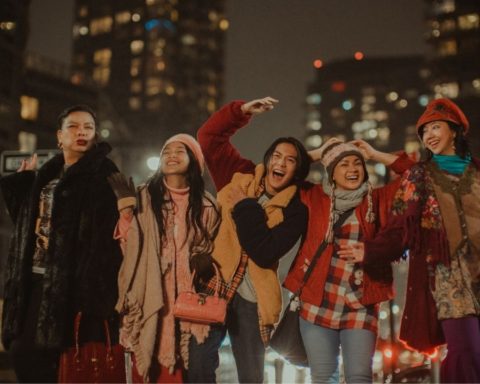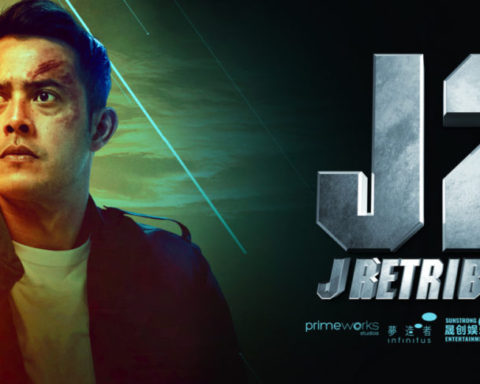A young princess tries to defend her peaceful valley from violent outsiders, through the most non-violent means she can.
Humanity struggles to survive in a world slowly being overrun by a toxic jungle and giant insects.
Warring nations vie for control of a terrifying ancient weapon, of the type that almost ended the world, 1000 years before.
A heroine tries to uncover the source of a seemingly unstoppable pestilence poisoning her world.
Any one of these story-lines would be enough for any filmmaker worth their salt to build an entire movie around, but for Hayao Miyazaki they are all just ingredients in his classic Nausicaä of the Valley of the Wind. Admittedly, he had a great head start, seeing as he was adapting his own 7 volume Manga to the screen, but unlike some other massive adaptations that ended up a little messy (no offence Akira) he turned in a beautiful, heartfelt story that works on it’s own terms and gets across important messages, while avoiding being preachy.
VHS Memories

I may feel like I watched Laputa: Castle in the Sky as a child, but my first real introduction to anime was definitely Nausicaä of the Valley of the Wind. My first viewing was probably the heavily edited Warriors of the Wind version, rented from a local VHS rental store (ask your parents kids!) but I’ve seen the proper version a few times over the years, and been surprised by Patrick Stewart’s voice as Lord Yupa at the start every time.
As a child it was the imagery of Nausicaä, flying above the desert that separates her valley from the toxic jungle, above the giant and terrifying insect Ohms, on her beautifully designed glider that seized my imagination. Her Fox-Squirrel Teto at her shoulder, in a world where the very air can poison you. It’s a film, along with Mad Max Beyond Thunderdome, that had me imagining desert wastelands as my mental playgrounds for my Star Wars and G.I. Joe action figures. As an adult it’s Nausicaä’s message of trying to live with your environment and working to achieve your goals through peaceful means that really sticks with me.
1000 Years Since the Collapse

For those of you who haven’t yet experienced Hayao Miyazaki’s masterpiece, in Nausicaä’s world large sections of the planet have been swallowed by a toxic jungle. Deadly to humans, only giant, hideous insects can survive there. Nausicaä’s valley is protected by both a favourable wind and constant vigilance against the spores through which the jungle spreads. Not every nation is so lucky. As the rulers of other nations squabble over the remaining inhabitable land, the valley of the wind is drawn into (what’s left of the) world politics as the nations of Tolmekia and Pejite battle for control over an ancient bio weapon, a terrifying “Giant Warrior”.
As with Laputa, rewatching Nausicaä I noticed a host of details that I’d missed before. Despite the slightly vague title card and sometimes dodgy English dub, the dire state of the world is slowly introduced as Lord Yupa (Patrick Stewart) laments “another village dead” as he discovers skeletons amongst the spores in the very opening moments of the film. The villagers who rejoice at his arrival in the valley boast of “a baby born in the valley this year”. Note the use of singular article.
I Need A Hero(ine)

Nausicaä’s peaceful, understanding nature doesn’t need to be spelled out either. It’s there in her instinct to rush the aid of an unknown traveller pursued by an Ohm. In the way she earns Teto’s trust by letting the critter bite down, hard on her finger, in a scene that still causes me to flinch. Only when he sees that there’s nothing to fear, that he can trust Nausicaä, does the wild animal release his bite and lick the wound. That she chooses to try and find peaceful resolutions doesn’t mean she’s a pushover either. She takes down a cadre of invading Tolmekian soldiers with relative ease in a rage. The fact that she is so good at violence, makes it all the more potent that she chooses not to use it.
You Don’t Know What You Got ‘Til It’s Gone.

The themes of environmentalism and finding some kind of balance with the environment are even more powerful than they were back in 1984. The toxic jungle can’t be ignored or reasoned with. Attempts to fight it only end in tragedy. The Tolmekian Princess Kushana plans to use the Giant warrior to burn the jungle from the Earth, but Nausicaä knows that doing so will only enrage the unstoppable Ohm and lead to their destruction. Confrontation is not an option. Only, at best, co-existence. It’s a message made all the more powerful when the true nature of the jungle and humanity’s dependency on it is revealed (you’ll have to watch the film to find that out).
Despite the cute squirrel fox, the rest of the fauna in the film is far from appealing. From the hideous alienness of the Ohms, with their too many eyes and various gross, giant flying bugs, Miyazaki seems to be saying that nature doesn’t have to be cute in order to deserve saving.
Miyazaki Dreams of Flying

Not that any of this means that you get a dry lecture on ecology and politics. Far from it. As with Laputa, plenty of the film is spent in the air, aboard bulbous steampunk-before-there-was-steampunk aircraft. Amongst clouds that act almost like physical barriers to those duelling amongst them. Despite the film’s age, it’s still staggeringly beautiful, often in the most simple moments. Despite the grand vistas, and epic melting Giant Warriors, my favourite moments are those where Nausicaä launches or lands her iconic glider.
That melting Giant Warrior brings a tinge of horror to the proceedings. It’s skin and musculature sloughing off as it crumbles, having been activated before it was fully…”baked”.
Now, More Than Ever…

When it comes to the climax, I DARE you not to be affected as Nausicaä desperately tries to stop the Pejite soldiers and the stampede of the Ohms, all without raising a gun.
At this particular point in time, when nature has once again reminded us how fragile our modern world is, and how connected we all are, the messages of Nausicaä of the Valley of the Wind are all the more timely. While the cities lay silent, it gives us a chance to reflect on how we should deal with each other, and the planet, when the current crisis ends.
Nausicaä of the Valley of the Wind
117 minutes
Director: Hayao Miyazaki
Writer: Hayao Miyazaki
Cast: (English Dub) Alison Lohman, Patrick Stewart, Shia LaBeouf, Uma Thurman, Chris Sarandon, Edward James Olmos, James Arnold Taylor, Frank Welker, and Mark Hamill
Cast: (Japanese Original) Sumi Shimamoto, Goro Naya, Yōji Matsuda, Yoshiko Sakakibara, Iemasa Kayumi, Ichirō Nagai, Mahito Tsujimura, Kōhei Miyauchi, and Makoto Terada
Netflix have released Studio Ghibli’s films on their platform, outside the US, Canada, and Japan, in the following three batches:
- February 1, 2020: Castle in the Sky (1986), My Neighbor Totoro (1988), Kiki’s Delivery Service (1989), Only Yesterday (1991), Porco Rosso (1992), Ocean Waves (1993), Tales from Earthsea (2006)
- March 1, 2020: Nausicaä of the Valley of the Wind (1984), Princess Mononoke (1997), My Neighbors the Yamadas (1999), Spirited Away (2001), The Cat Returns (2002), Arrietty (2010), The Tale of The Princess Kaguya (2013)
- April 1, 2020: Pom Poko (1994), Whisper of the Heart (1995), Howl’s Moving Castle (2004), Ponyo on the Cliff by the Sea (2008), From Up on Poppy Hill (2011), The Wind Rises (2013), When Marnie Was There (2014)












Follow Us